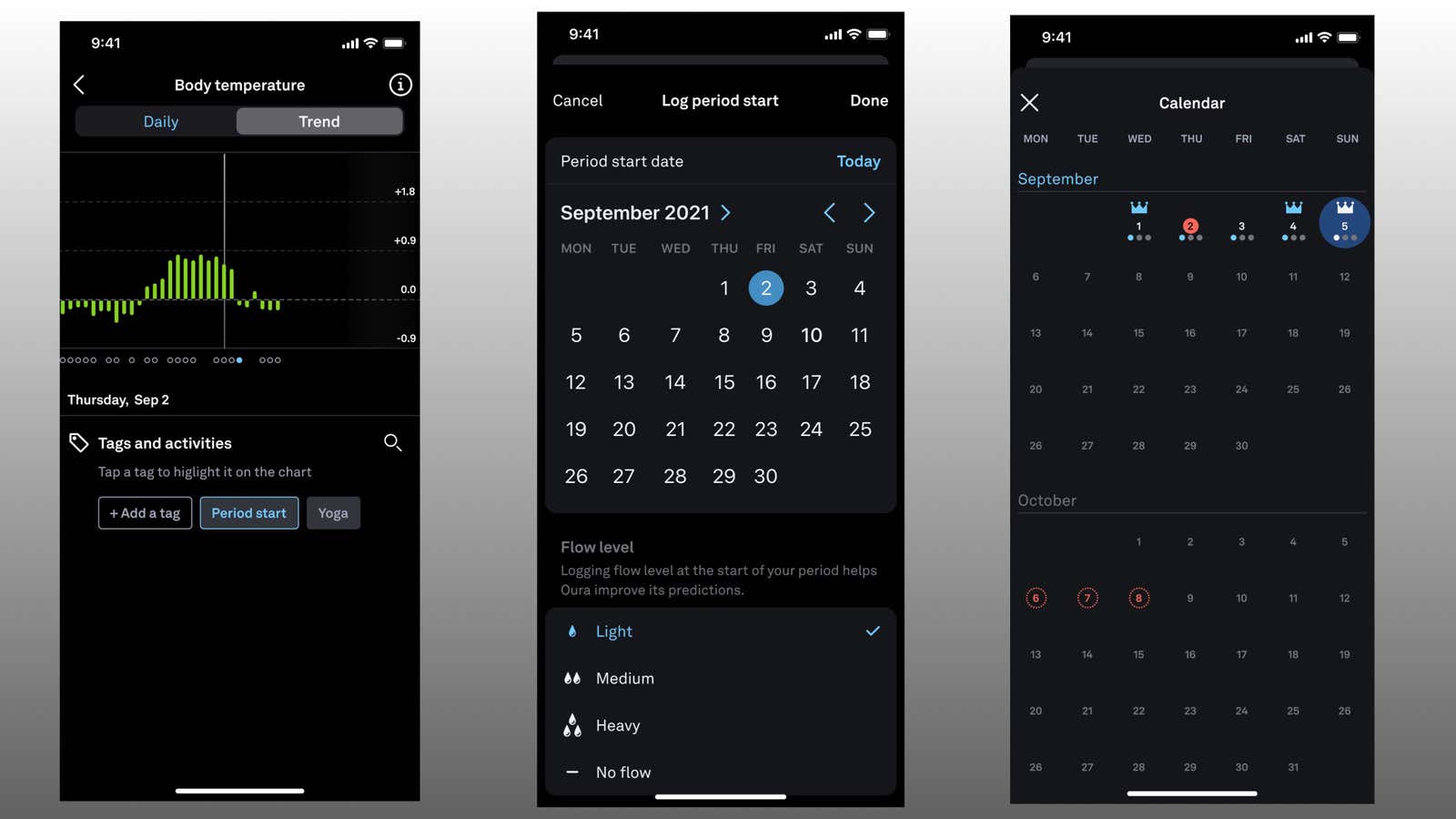How to Predict Ovulation (and Your Periods) With the Oura Ring

The human body has a tiny quirk that many of us can live our entire lives without realizing it: body temperature rises by about half a degree after ovulation and drops again around the start of menstruation. Unless you personally ovulate, you probably don’t care. If you do, this fact can be extremely helpful when planning (or trying to avoid) pregnancy. And Oura, the ring-shaped wearable device best known as a sleep tracker , can now use it (along with other data) to predict menstruation.
I remember tracking my temperature when I was trying to conceive my first child. Then you had to buy a special thermometer with an extra decimal place at the pharmacy (so you have not just 98.6, but, say, 98.62). The first thing you should do is measure your temperature in the morning, when it is most stable, and always at the same time. And if you keep records in a notebook or on a dedicated fertility tracking website, you can pinpoint your ovulation time to the exact day.
You will most likely become pregnant in the last few days before ovulation, so knowing when that time is each month is very helpful. And if you don’t want to get pregnant, temperature-based fertility awareness can help – although, as you might have guessed, it’s not as effective as an IUD, oral contraceptives, or barrier methods like condoms. ( For more information on this method, see the Planned Parenthood program here .)
When I first heard about how the Oura ring uses skin temperature as one of the factors determining your “readiness”, I wondered if this meant that ovulation could lower your score. And that was true, at least at first, but then the company realized that temperature tracking could be useful for those who are ovulating. If you want to get pregnant, you can not only track your temperature, but also know where you are in your cycle.
If your period occurs every four weeks, ovulation usually occurs right in the middle, about two weeks after your period starts. If your cycle is longer, usually the first half will be longer – say, three weeks from your period to ovulation, and then two weeks from ovulation to your next period.
What the Oura app does
There are other devices that track temperature changes to support fertility, such as the Ava bracelet. Oura is not specifically designed for conceiving children, but the company has announced that a new version of their ring will include a period prediction feature in its app. The old ring will still let you view temperatures and mark days as days in a period, but the new ring adds predictive algorithms.
(It’s important to note that if you own an Oura ring or are considering buying one, the company has simply changed its business model. Instead of buying the ring and getting its features for free – unlike Whoop, which gives you the technology for free and then charges subscription fees – Oura now charges a ring fee and plans to charge a subscription fee Right now they offer renewal and lifetime subscription offers if you already have a ring and they include a 6 month membership for new customers. If you plan to use the old model, it will still work as before. For more information on the new ring and its functions, Gizmodo explains here .)
According to research by the company, including one published last year , the ring is capable of detecting changes in temperature and heart rate variability (two things it measures anyway when tracking sleep and health) that predict the hormone surge that occurs around ovulation.
Period forecasting will be available on iOS immediately and on Android shortly thereafter, the company says. To customize it, you turn it on in Settings (or from the card that appears on your home screen) and then answer a few questions about how long and how regular your cycles are. After that, the ring will track your temperature, and you will inform him about it every time you start your period. Here’s the company’s guide to the new feature .
It takes about two months to start getting accurate forecasts, and then the app will be able to tell you every month when it expects your period. You will receive a rough estimate 30 days in advance, a six-day reminder, and a reminder the day before.
The company disclaims that while this feature should work with cycles of any length, they do not expect it to be accurate if you are using hormonal contraception, have an IUD, or are using hormone replacement therapy, as you do not have to expect temperature changes. …